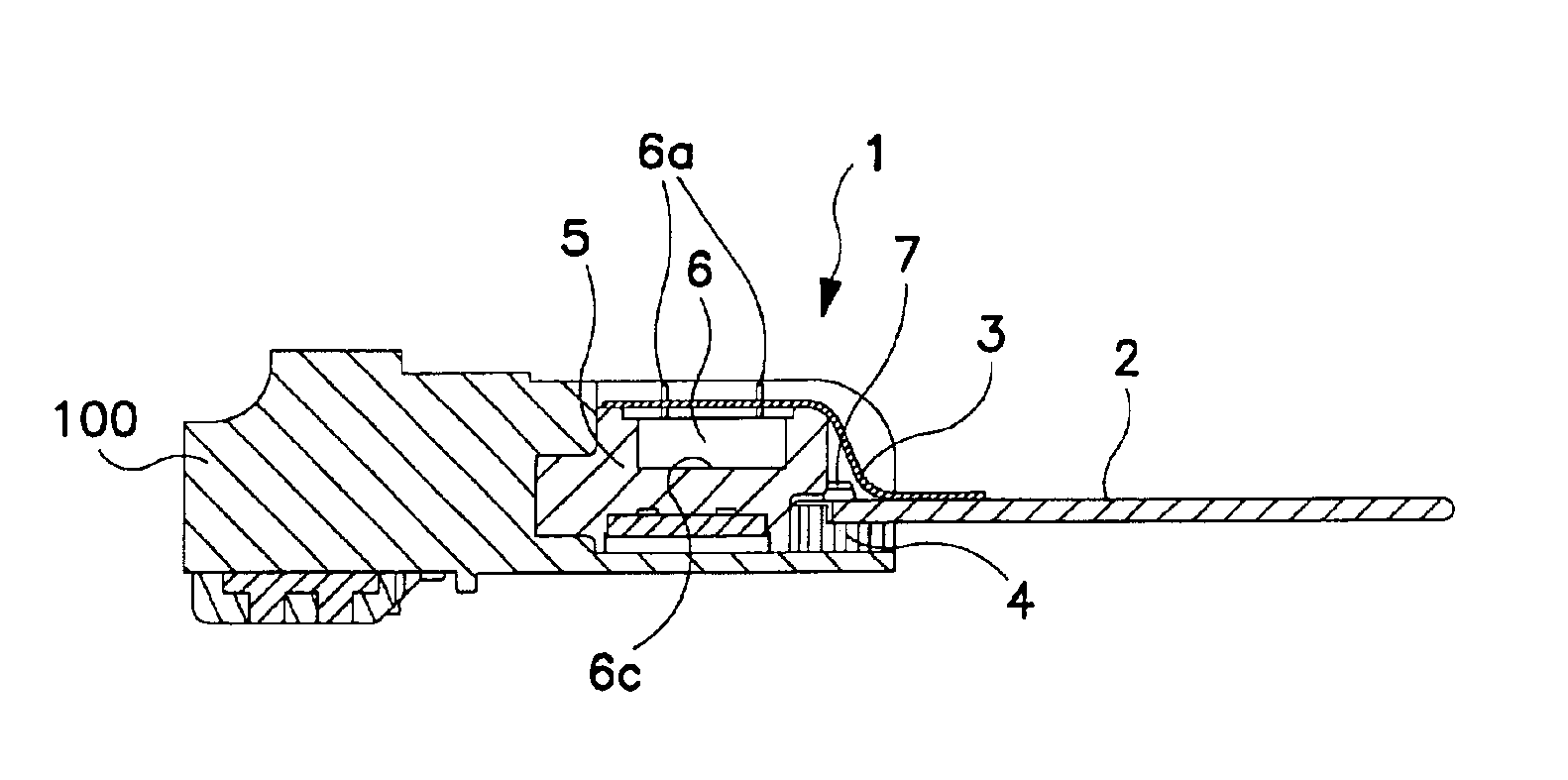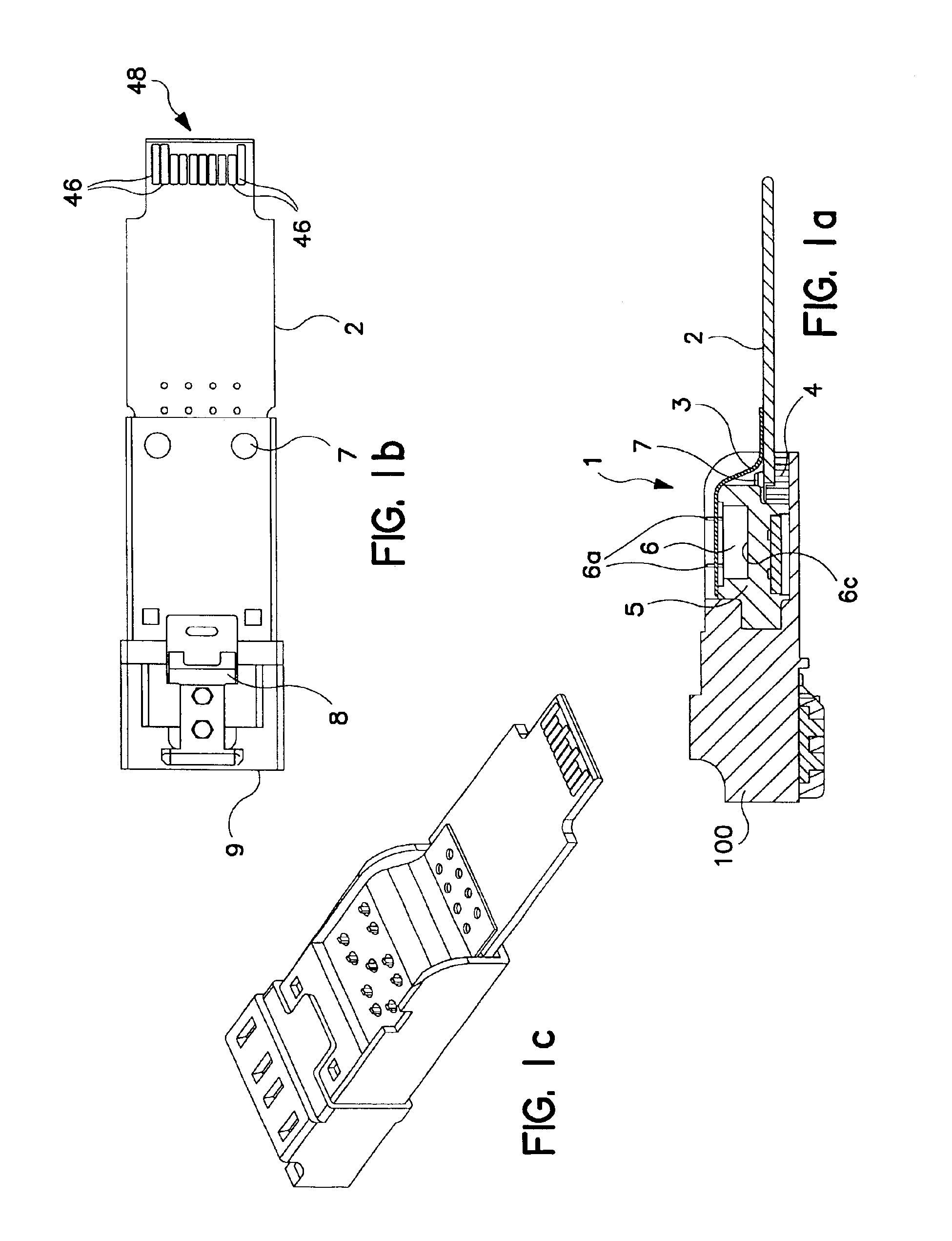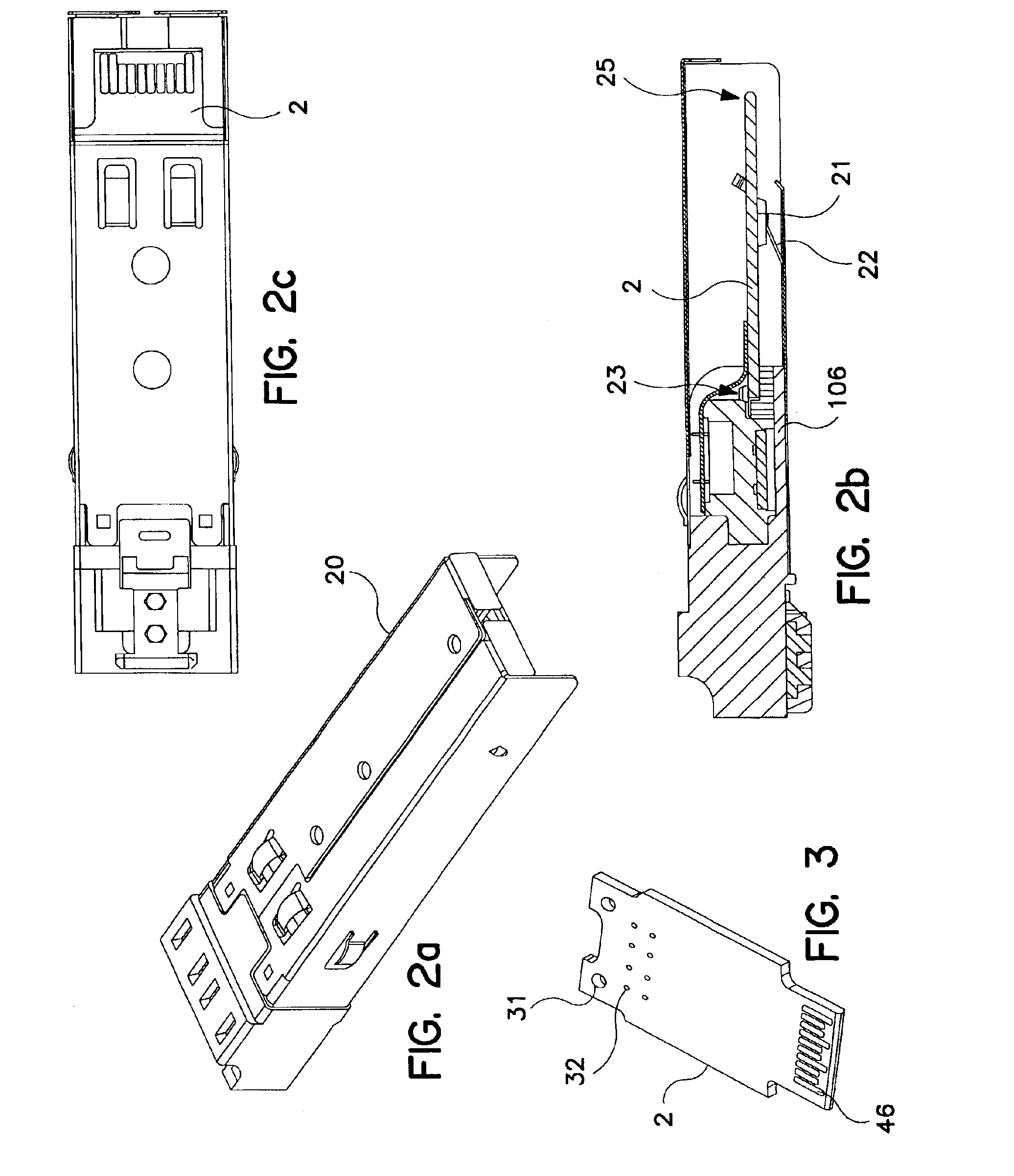Transceiver for LC connector
a technology of transceiver and connector, which is applied in the direction of optics, instruments, optical light guides, etc., can solve the problems of incompatibility of prior art optoelectric modules with early defect detection procedures, high cost of optoelectric modules, and high cost of completion, so as to facilitate testing, reduce cost, and facilitate the effect of testing
- Summary
- Abstract
- Description
- Claims
- Application Information
AI Technical Summary
Benefits of technology
Problems solved by technology
Method used
Image
Examples
Embodiment Construction
FIGS. 1a-c are cross-sectional, bottom and perspective views of a module 1 in accordance with the present invention. The module 10 is configured to be mounted in a variety of host systems including for example, routers, computers, switches, bridges, and I / O cards. In general, the module may be used in any application requiring an interface between electrical and optical signals. As shown in FIG. 1a, the module 1 basically comprises a testable optical subassembly which in turn comprises an optical block 5 and opto-electric devices (OEDs) 6. The testable optical subassembly is combined with other components which are herein refereed to as post-test-assembly components and which include a printed circuit board 2 and a housing 20 (FIG. 2a). These components are addressed in greater detail below.
Testable Optical Subassembly
An important aspect of the present invention is the testable optical subassembly. The testable optical subassembly essentially involves only two components—namely, the...
PUM
 Login to View More
Login to View More Abstract
Description
Claims
Application Information
 Login to View More
Login to View More - R&D
- Intellectual Property
- Life Sciences
- Materials
- Tech Scout
- Unparalleled Data Quality
- Higher Quality Content
- 60% Fewer Hallucinations
Browse by: Latest US Patents, China's latest patents, Technical Efficacy Thesaurus, Application Domain, Technology Topic, Popular Technical Reports.
© 2025 PatSnap. All rights reserved.Legal|Privacy policy|Modern Slavery Act Transparency Statement|Sitemap|About US| Contact US: help@patsnap.com



